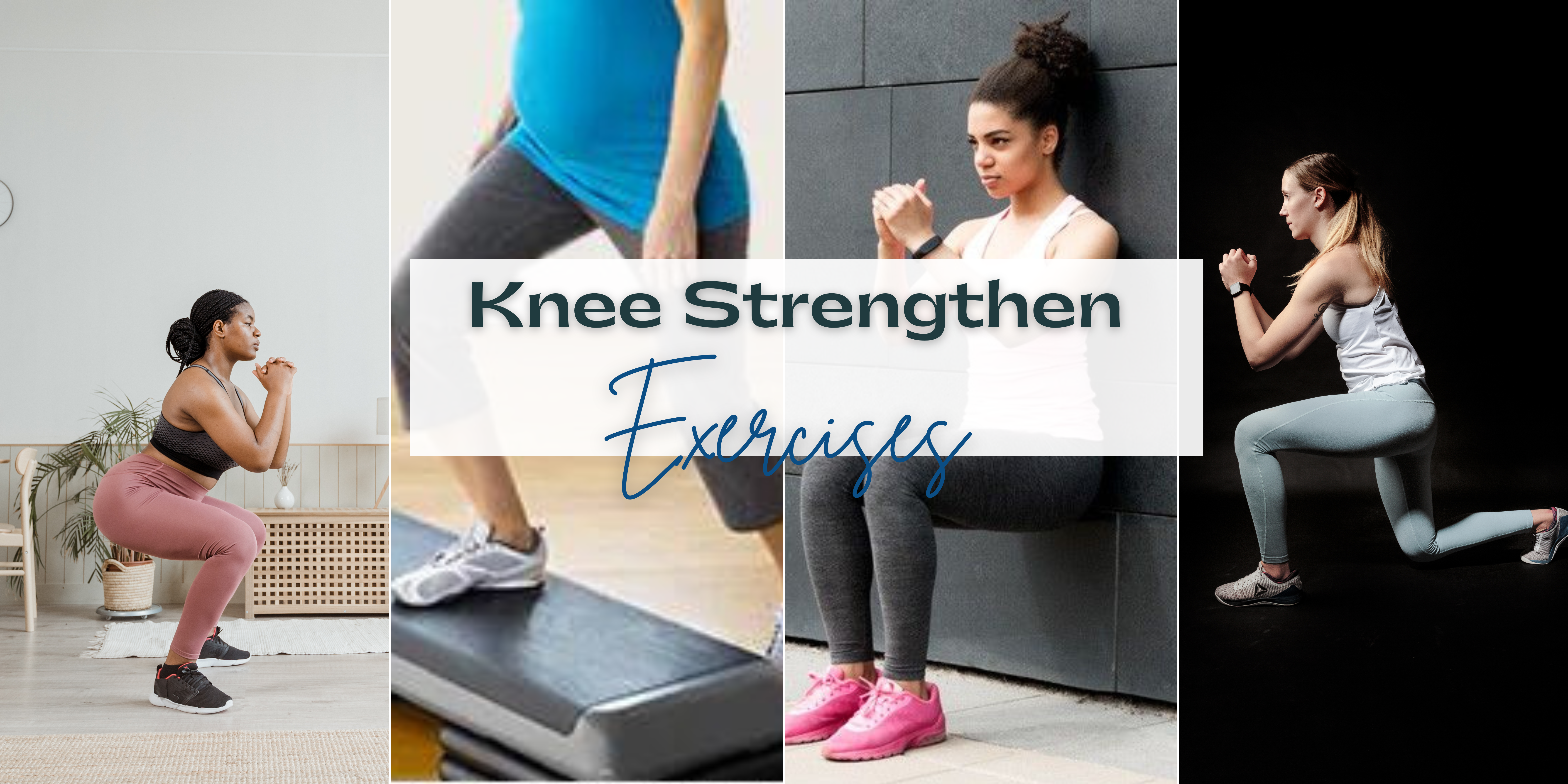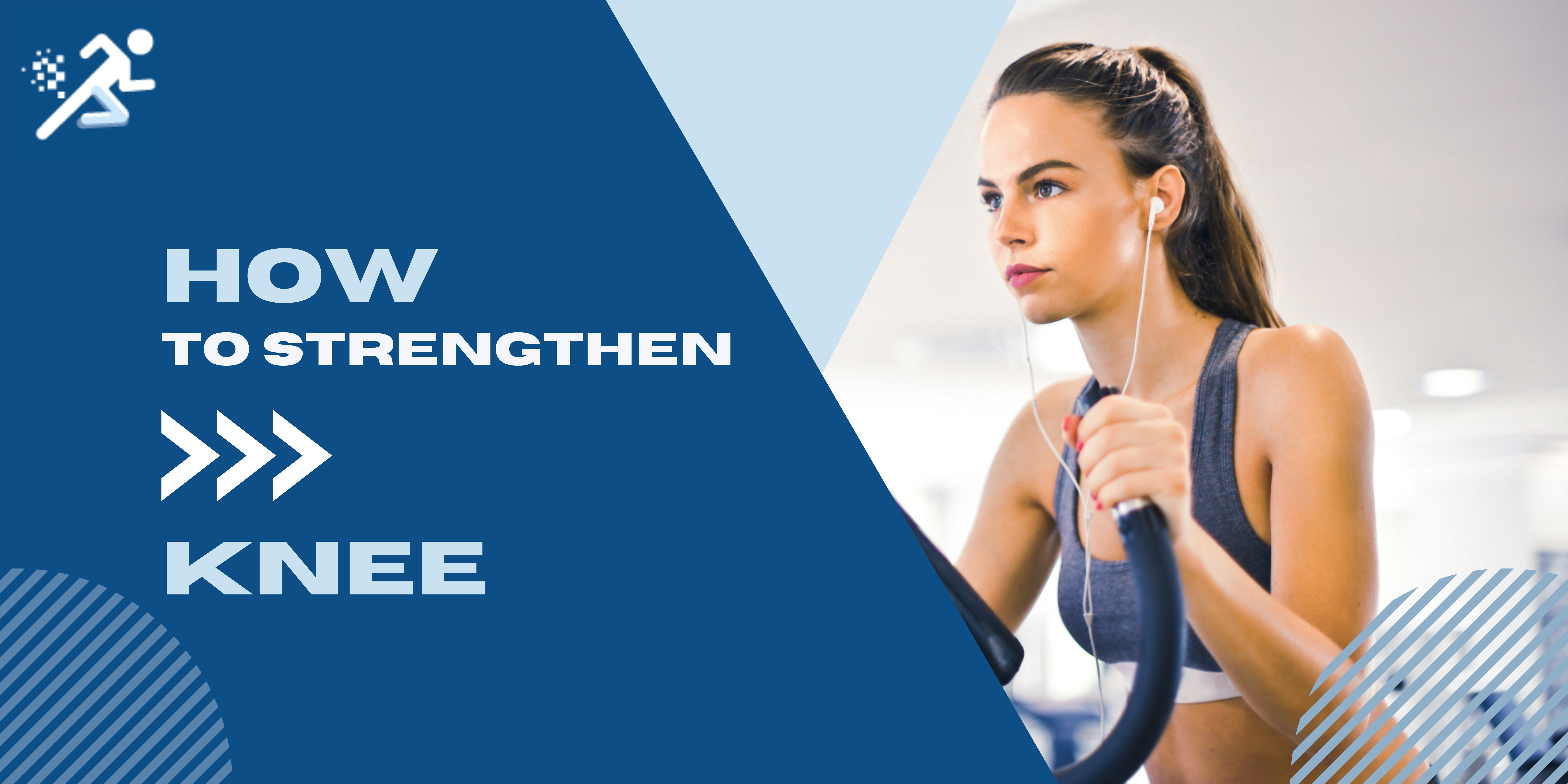Strengthening your knees is important for overall joint health and can help reduce the risk of knee injuries. Here are some tips and information on how to strengthen your knees:
Exercise regularly:
Regular exercise can help strengthen the muscles around your knees, including the quadriceps, hamstrings, and calves. This can help support your knee joint and prevent injury.
Here are some knee strengthening exercises you can try:

Remember to start with lighter weights or simpler variations of these exercises and gradually increase as your strength improves. It’s also important to listen to your body and not push yourself too hard, as this can lead to injury.
- Squats: Stand with your feet shoulder-width apart and squat down as if you were sitting in a chair, making sure your knees don’t go past your toes. Repeat for 10-15 reps.
- Lunges: Take a step forward with one foot and bend both knees, lowering your back knee towards the floor. Repeat on the other side, alternating legs for 10-15 reps.
- Step-ups: Step up onto a raised platform, such as a step or bench, and step back down, alternating legs for 10-15 reps.
- Leg curls: Lie face down on a mat with your legs straight out behind you, and bend your knee to bring your heel towards your buttocks. Repeat for 10-15 reps on each leg.
- Wall sits: Stand with your back against a wall and slide down until your knees are bent at a 90-degree angle, holding for 30 seconds to 1 minute.
Stretch before exercising:
Stretching can help improve your flexibility and range of motion, which can help reduce the risk of knee injury.
Here are some stretches you can do before knee exercises:
- Quad stretch: Stand on one leg and bend your other knee, bringing your heel towards your buttocks. Hold onto your ankle or use a strap to gently pull your foot towards your buttocks until you feel a stretch in the front of your thigh. Hold for 15-30 seconds and repeat on the other leg.
- Hamstring stretch: Sit on the floor with your legs straight out in front of you. Reach forward towards your toes, keeping your back straight, until you feel a stretch in the back of your thighs. Hold for 15-30 seconds.
- Calf stretch: Stand facing a wall with one foot in front of the other. Lean forward towards the wall, keeping your back leg straight and your heel on the ground, until you feel a stretch in your calf. Hold for 15-30 seconds and repeat on the other leg.
- IT band stretch: Stand with your feet hip-width apart and cross your left leg behind your right. Reach your left arm up and lean to the right until you feel a stretch on the left side of your body. Hold for 15-30 seconds and repeat on the other side.
Remember to hold each stretch for 15-30 seconds and breathe deeply throughout. It’s important to never force a stretch or stretch through pain. If you experience any pain or discomfort during stretching, stop immediately and consult with a healthcare professional or physical therapist.
Wear proper footwear:
Wearing proper shoes that fit well and provide good support can help reduce the impact on your knees during exercise or daily activities.
Maintain a healthy weight:
Carrying excess weight can put extra stress on your knees, so maintaining a healthy weight through a balanced diet and regular exercise can help reduce the strain on your knees.
Use proper form when exercising:
Using proper form when exercising can help reduce the risk of knee injury. This includes using correct posture, keeping your knees aligned with your ankles, and avoiding sudden or jerky movements.
Use Knee Injury Assessment App :
FAAST is a breakthrough in the world of movement analysis. The FAAST application enables real-time motion analysis and uses the Landing Error Scoring System (LESS) to give instant feedback with just a smartphone (no cumbersome wires, trackers or expensive devices). This proprietary algorithm provides an accurate assessment of landing accuracy and helps coaches target issues such as hip flexor flexibility and quad strength.
Try low-impact exercises:
Low-impact exercises like swimming, cycling, or yoga can be easier on your knees while still providing a good workout.

